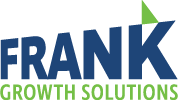What does your board and leadership team need to monitor to ensure you’re making progress toward your goals? A dashboard showing key productivity indicators (KPIs) can help answer this question.
Too much information can be as problematic as too little. I often hear boards and management talk about the overwhelming amount of data they need to gather and review, or on the opposite end of the spectrum, the lack of information.
The following key points from our friends at The Bridgespan Group are a fantastic starting point. I encourage you to read the entire article here.
1. Get aligned on organizational priorities (not necessarily metrics).
There are a lot of things nonprofits can track, and many of them feel important. But when it comes to a leadership team’s limited time and resources, it’s critical to be clear about what matters most.
Effective nonprofit dashboards are anchored in priorities. This helps leaders see if they are making progress toward their goals. Other data may be tracked elsewhere, such as by departments. But leadership teams should stay focused on the most important drivers of impact and performance.
2. Assess progress: Focus on “check-engine-light” metrics.
A dashboard should point leaders to the right information at the right time. Just like in a car, if the “check-engine light” comes on, leaders know they need to start addressing a problem. A nonprofit dashboard should include metrics—one or two per priority—that provide just enough data to know how things are going. If something signals red, it’s time for a deeper look.
- This data can include qualitative as well as quantitative data.
- The key is defining metrics that are easily tracked at regular intervals, even if that data isn’t perfect.
- With metrics identified, leaders need to define what the data means.
- Some longer-term targets may need to be broken down into nearer-term goals.
- Set clear goals using green, yellow, and red ‘lights’ to show progress toward each goal.
3. Act and follow up: Establish processes to ensure the dashboard supports decision making.
Gathering data is only worth it if you use it. To use a nonprofit dashboard effectively, leadership teams adopt a few simple but powerful habits to understand the data, take action, and follow up.
When a metric signals red, it’s time to dig deeper. Why are we off track? It’ll be important to talk with those most involved with the area—including constituents and communities—to better understand the problem and what the causes and solutions might be.
One of the greatest benefits of using a nonprofit dashboard with a leadership team is the opportunity to develop a culture of continuous improvement. This requires a serious and intentional effort—which can pay off over time.
Bridgespan goes on to provide both examples and templates, so I suggest you have a look and see if a dashboard might be a good reporting tool for your organization.
Til next month,
Frank



